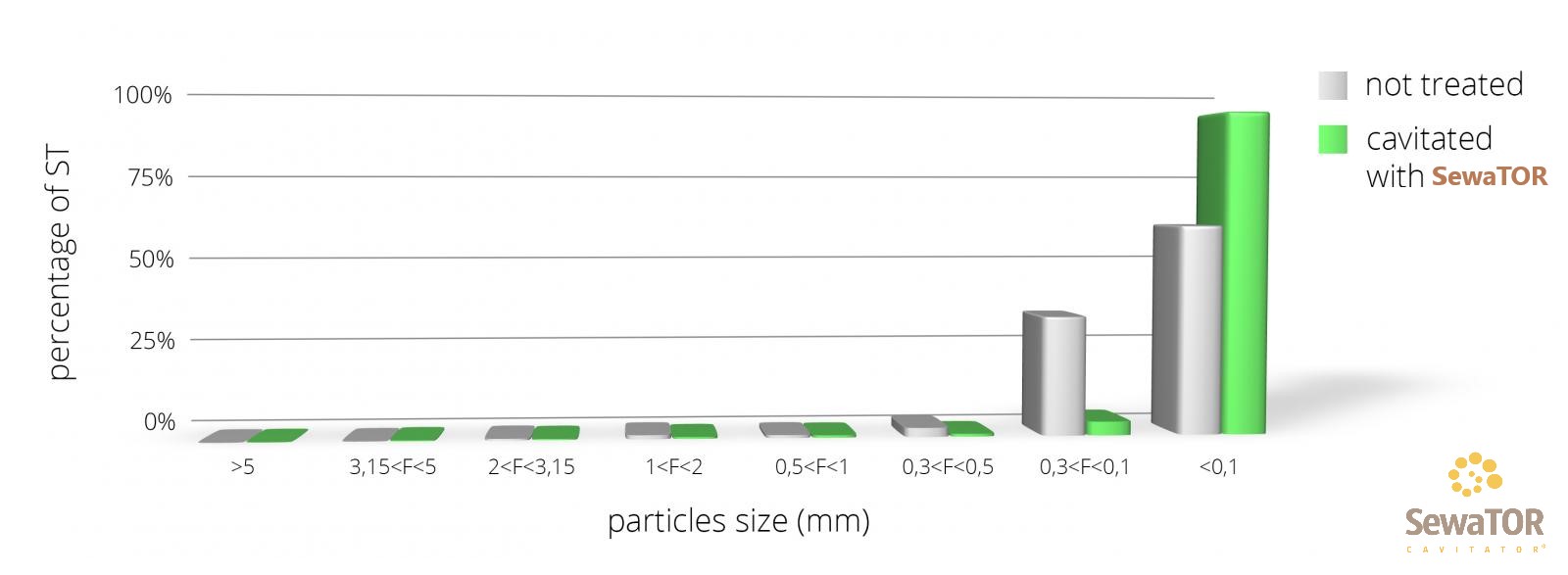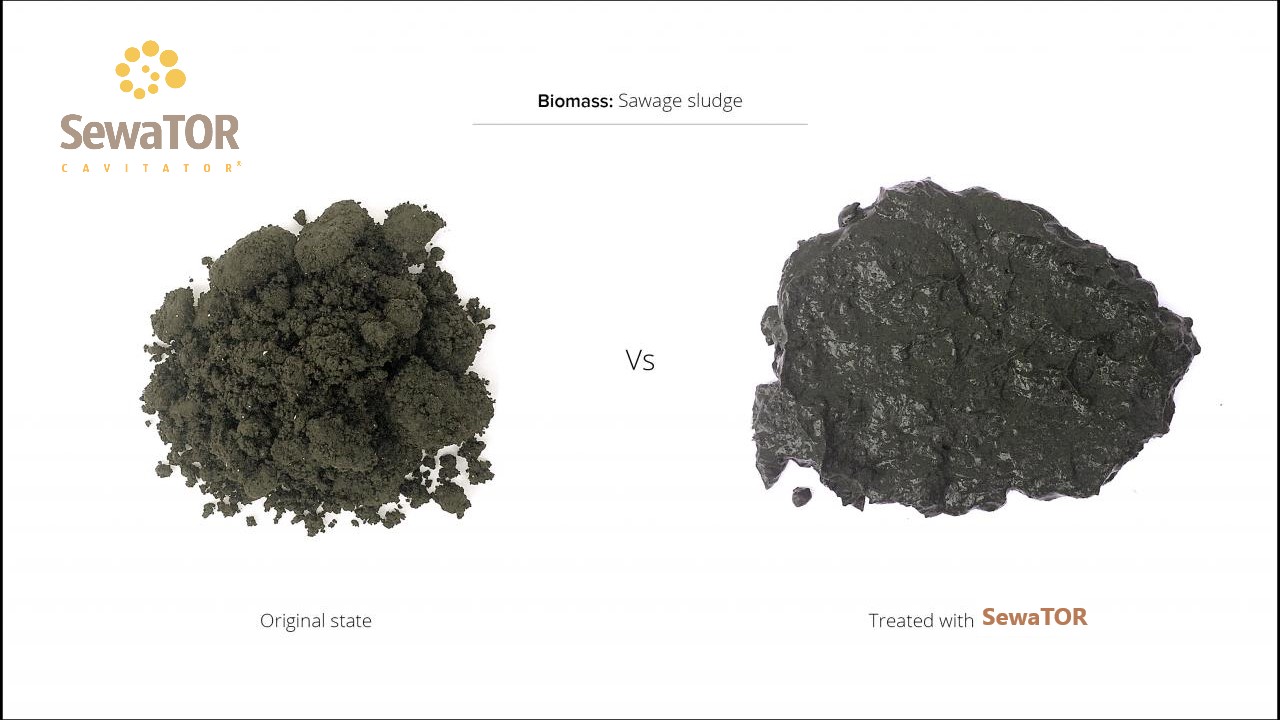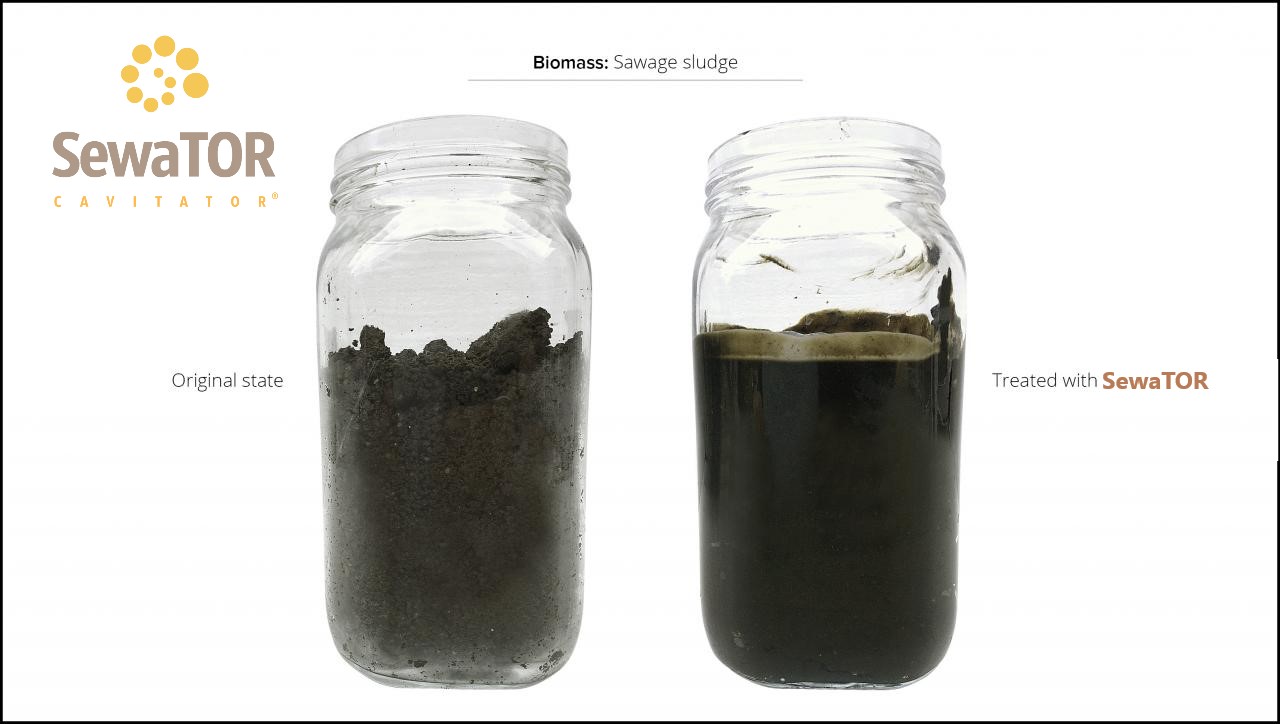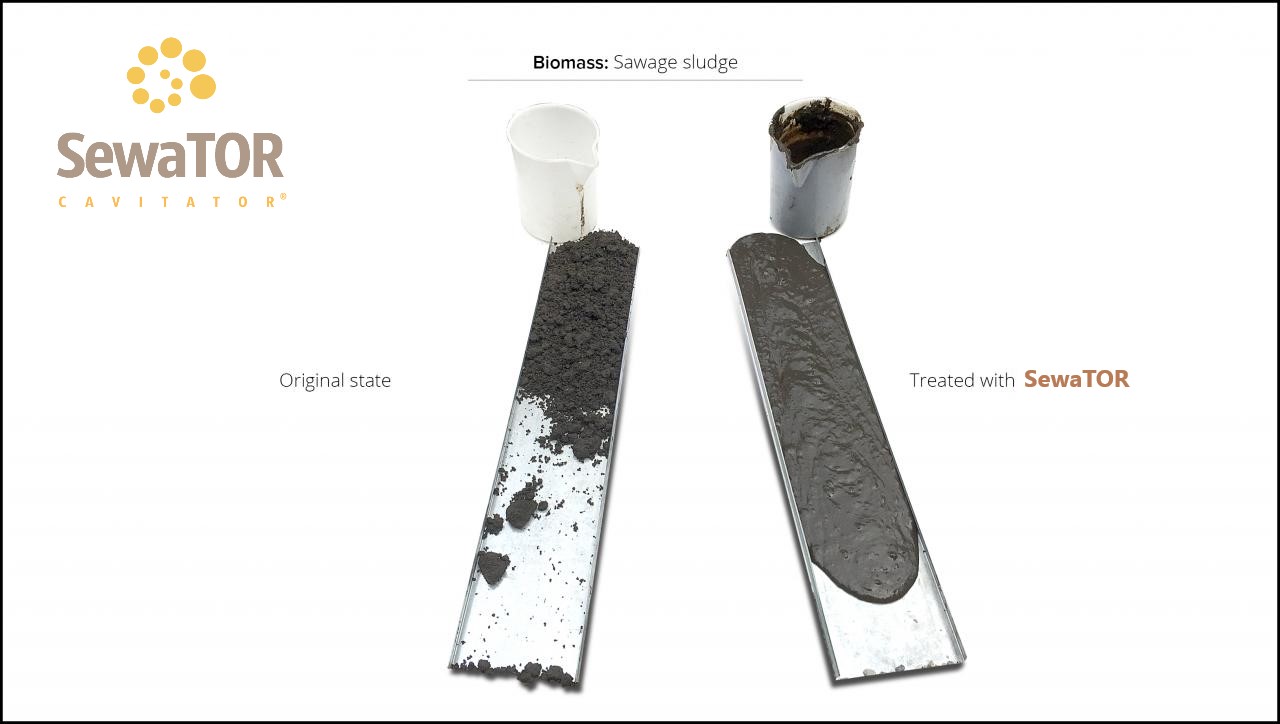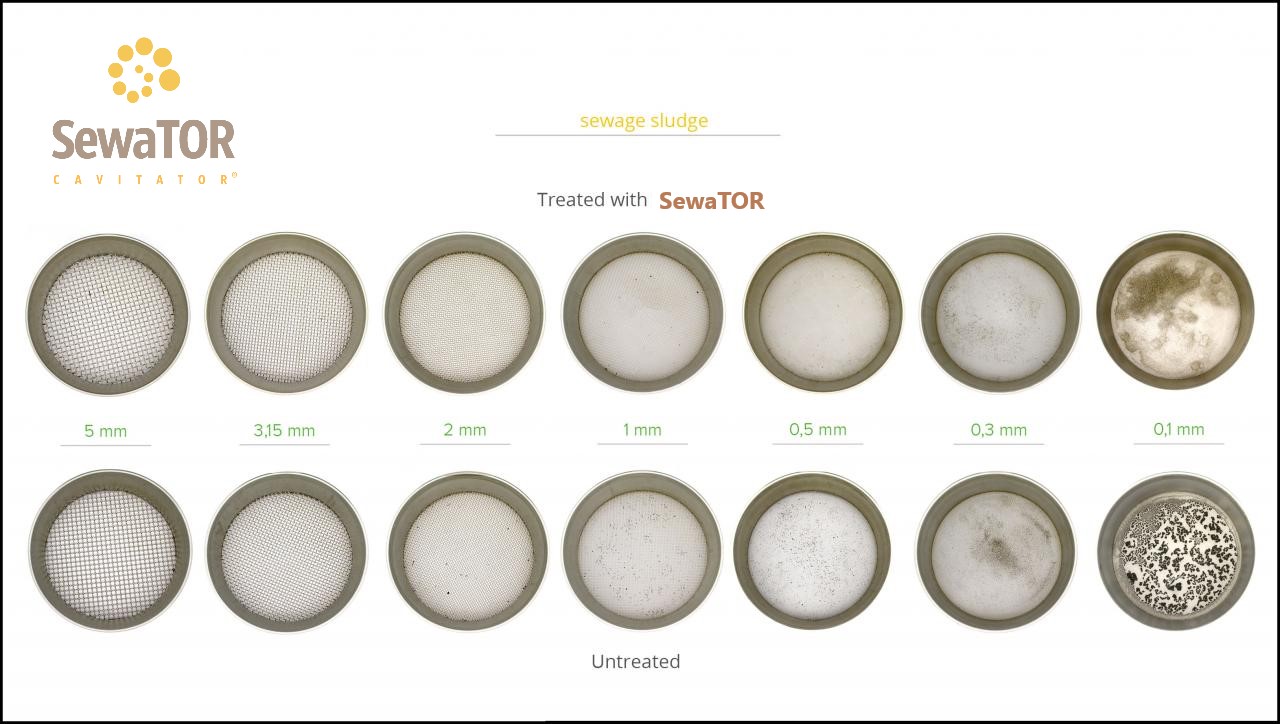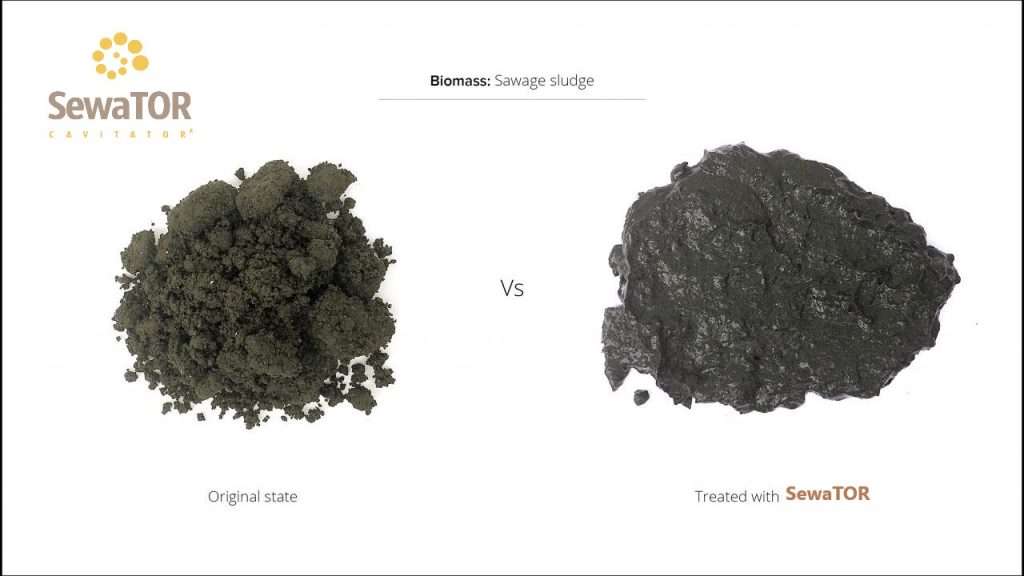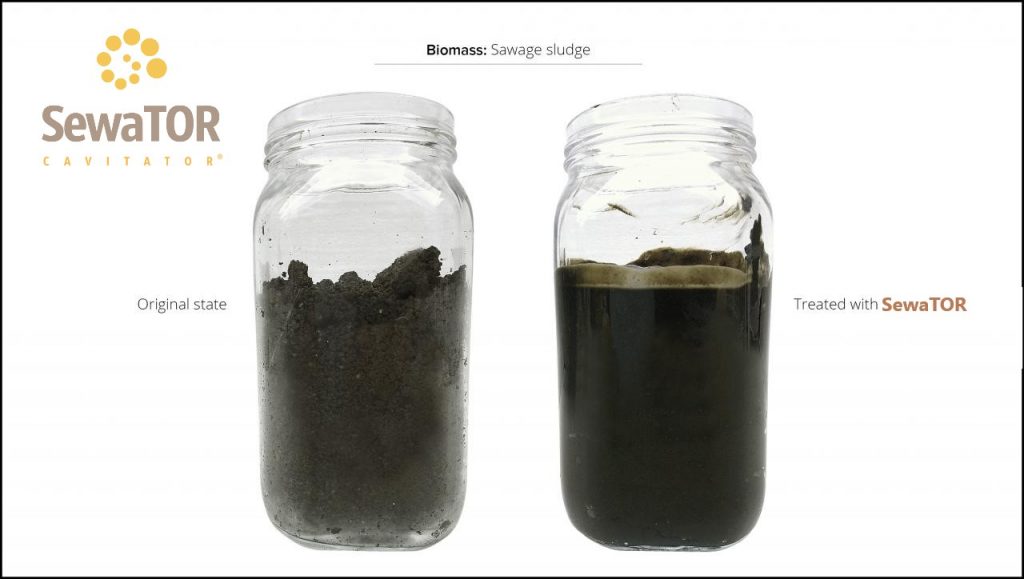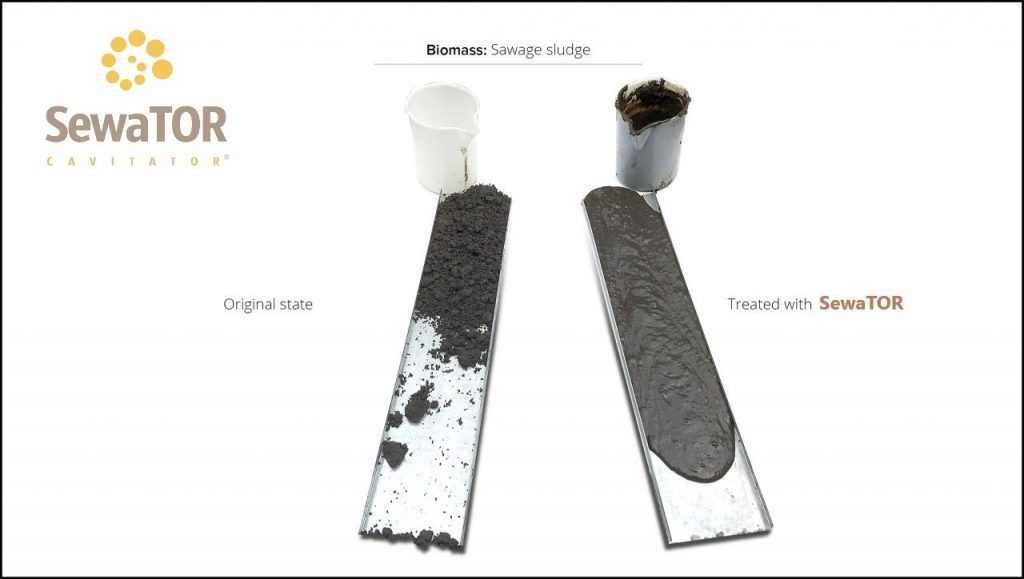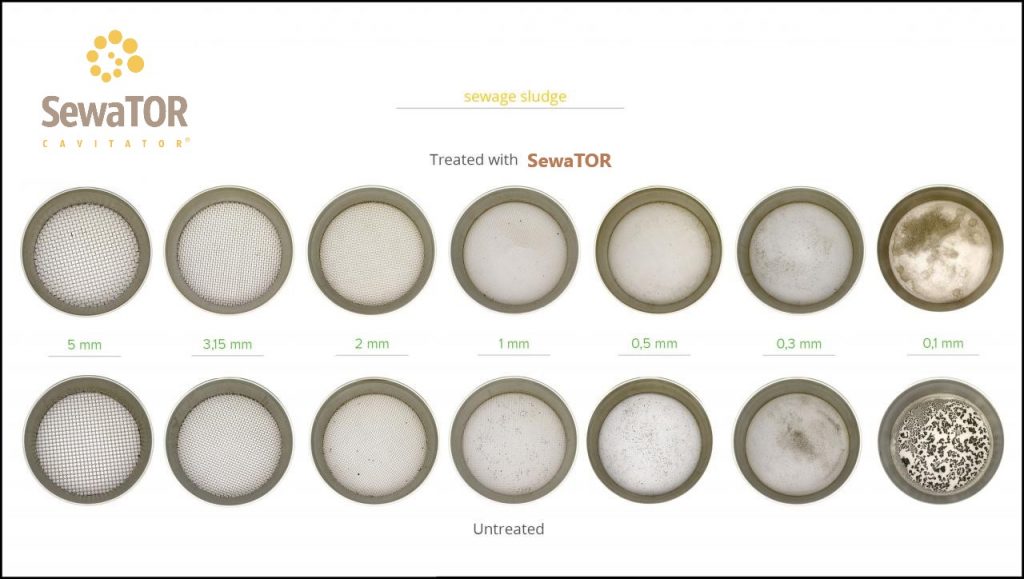SewaTOR®
In order to make the different biomasses pumpable and to be able to treat or pre-treat with the patented SewaTOR® technology, the samples were first diluted and then cavitated. This operation is closely related to the execution of the laboratory tests. In the case of full scale applications the dilution depends on the installation configuration. Several chemical and physical tests were carried out for each product. Simplified tests have also been carried out in order to clearly show the user the disintegration effects of treatment and pre-treatment of the biomass.
- Macroscopic effect: in order to show the intensive disintegration effect of fibre treated with SewaTOR® compared to biomass as it is, the treated products were poured into a container and then compressed in the hand. This simple operation allows the degree of disintegration to be quickly verified;
- Dynamic viscosity with an inclined plane: the two products, treated and untreated, were poured on an inclined plane with a constant slope. The sliding speed clearly shows the change in viscosity of the products treated with the patented SewaTOR® technology;
- Visual effect: the treatment results in homogeneous product with a low degree of separation, suitable for optimal mixing in digesters;
- Biomethanation test (BMP): treated, pre-treated and untreated biomass were tested for the effect of the SewaTOR® hydrodynamic cavitation technique on methane production. The tests were conducted by an external laboratory with many years of experience in the field;
- Wet particle size: The technique is used to evaluate the distribution of dry matter into different size classes before and after treatment with SewaTOR®. The results show how the particle size of the organic matter changes, allowing the user to assess whether the degree of disintegration is in accordance with their needs.
STATIC TEST FOR DETERMINATION OF METHANOGENIC POTENTIAL BMP
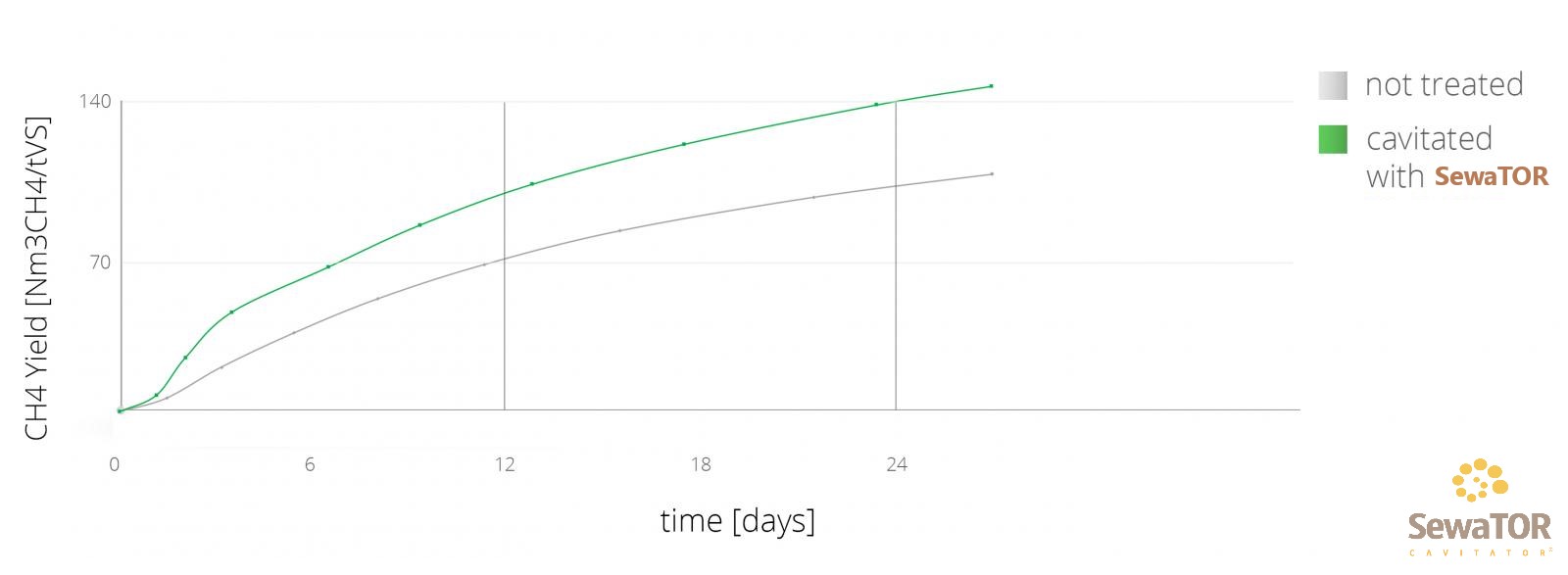
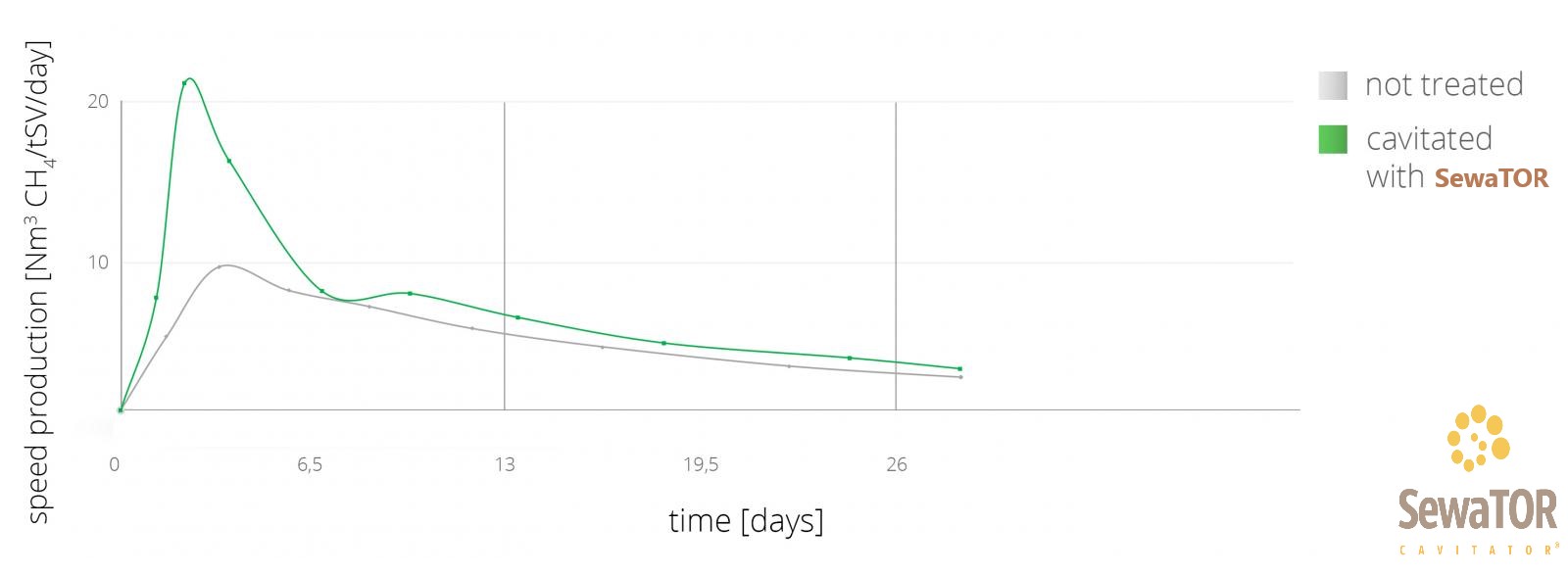
GRANULOMETRIC ANALYSIS
